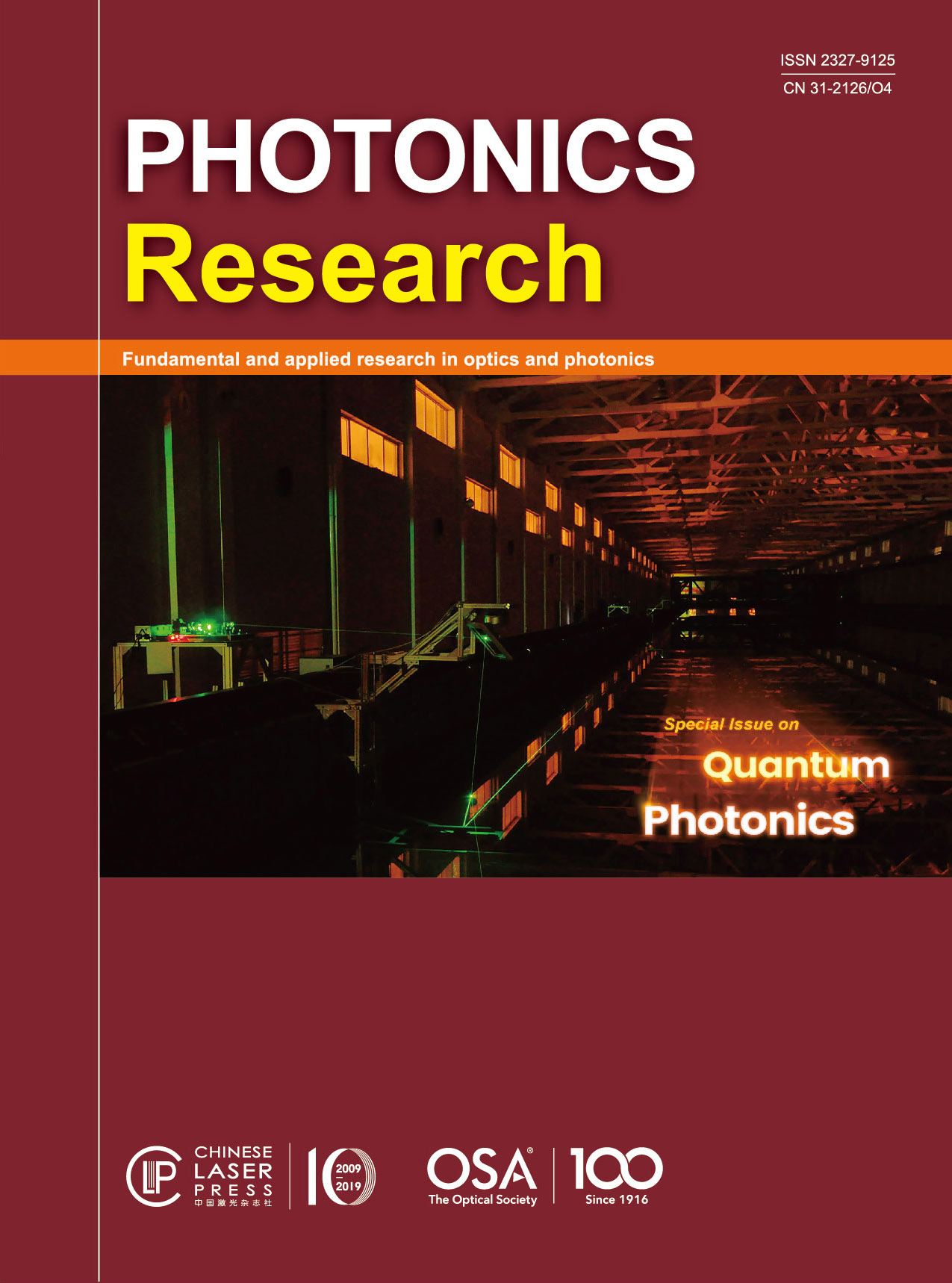- Special Issue
- Quantum Photonics
- 8 Article (s)
- Publication Date: Dec. 01, 2019
- Vol. 7, Issue 12, 12000QP1 (2019)
- Publication Date: Feb. 08, 2019
- Vol. 7, Issue 3, 030000A1 (2019)
- Publication Date: Apr. 15, 2019
- Vol. 7, Issue 5, 050000A7 (2019)
- Publication Date: Jun. 05, 2019
- Vol. 7, Issue 7, 07000A27 (2019)
- Publication Date: Jun. 07, 2019
- Vol. 7, Issue 7, 07000A36 (2019)
- Publication Date: Jul. 25, 2019
- Vol. 7, Issue 8, 08000A40 (2019)
- Publication Date: Oct. 23, 2019
- Vol. 7, Issue 11, 11000A45 (2019)
- Publication Date: Oct. 31, 2019
- Vol. 7, Issue 11, 11000A56 (2019)
Quantum photonics is an increasingly important emerging field because of the rising demand for experimental demonstration of quantum communication, quantum computing, and quantum simulation, and photonic chips possess prominent advantages as a potential analog for digital quantum computers and a versatile tool for probing fundamental quantum physics.
Using the photonic structure to form a large state-space not only may be fundamentally interesting but also may provide a powerful platform for quantum simulation and quantum computing. This Feature Issue will explore the use of photonic platforms to investigate quantum advantage/supremacy in various quantum computing protocols, such as Boson sampling, quantum walk, fast hitting, and even universal quantum computing protocols.










